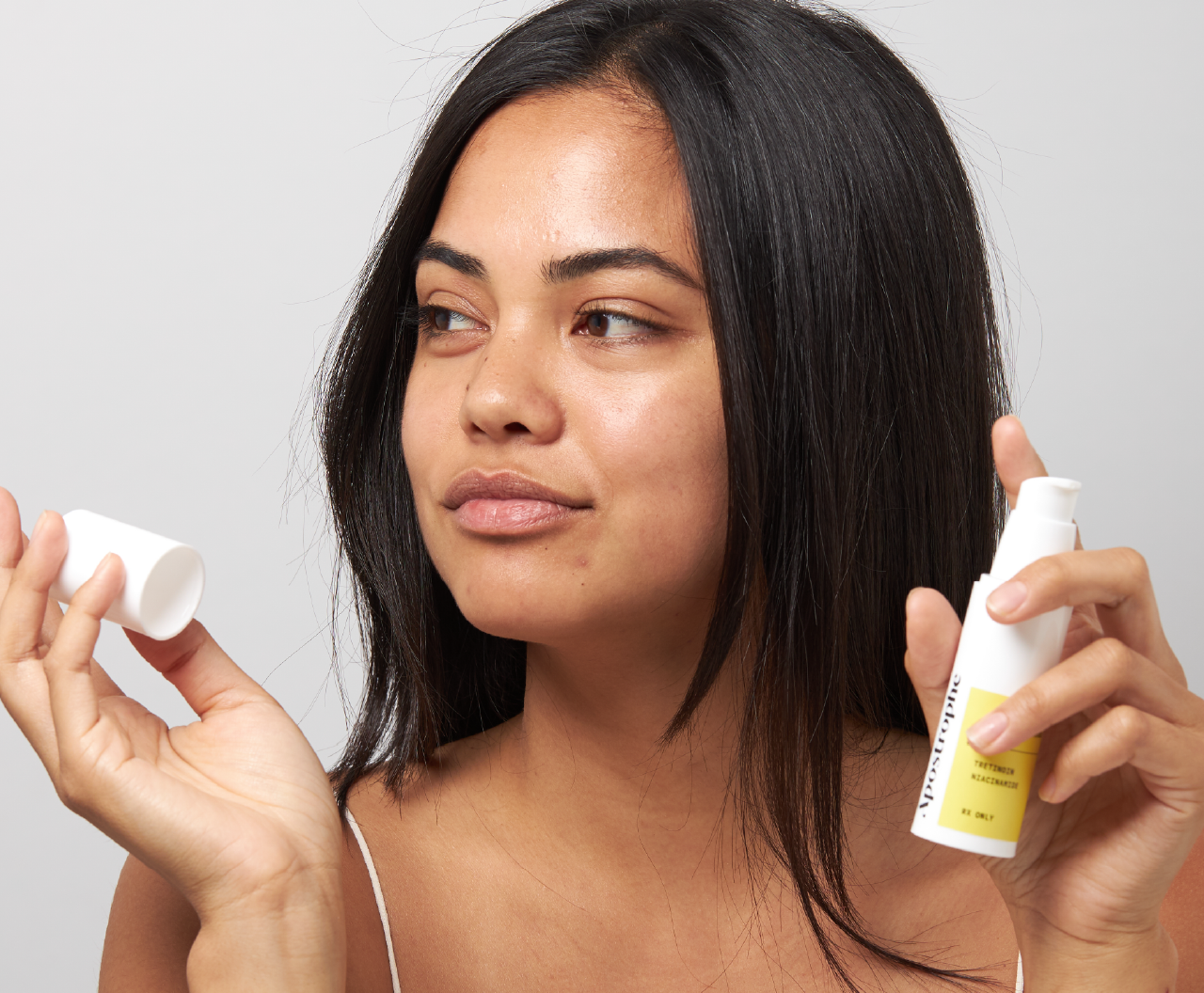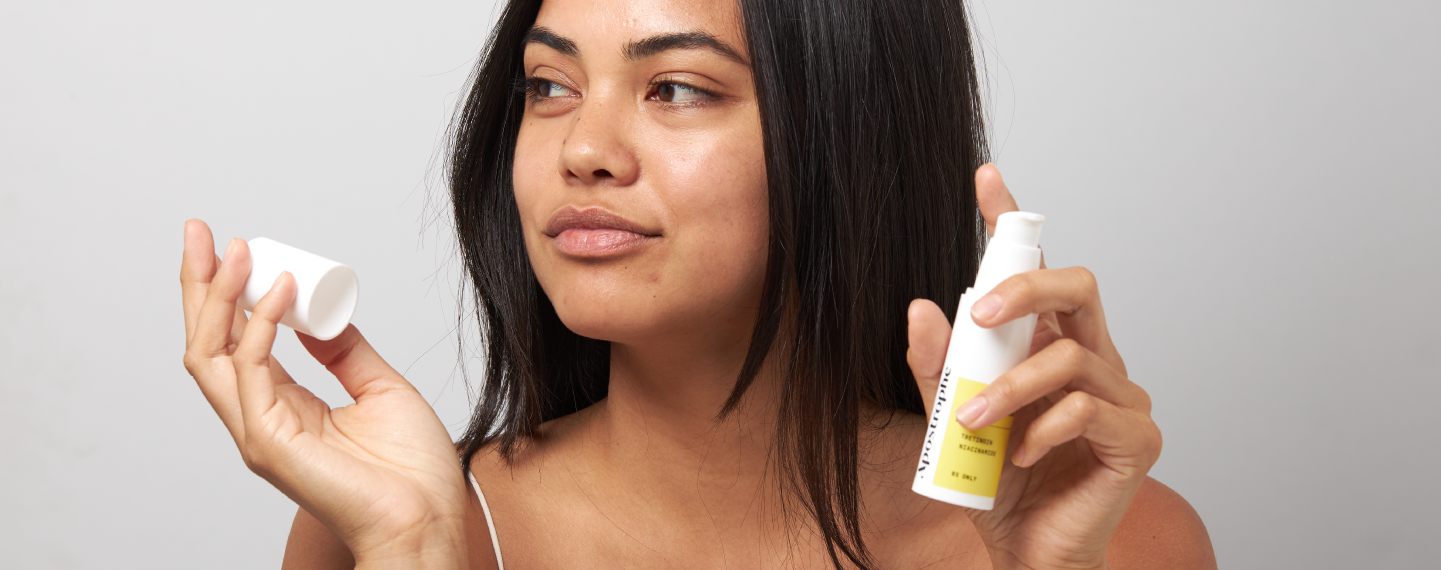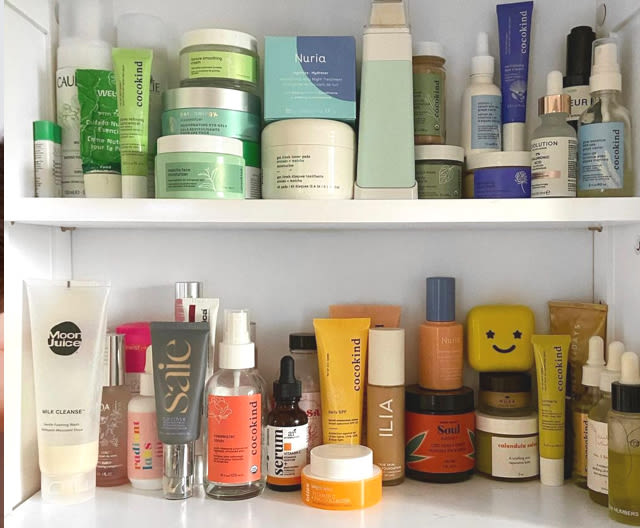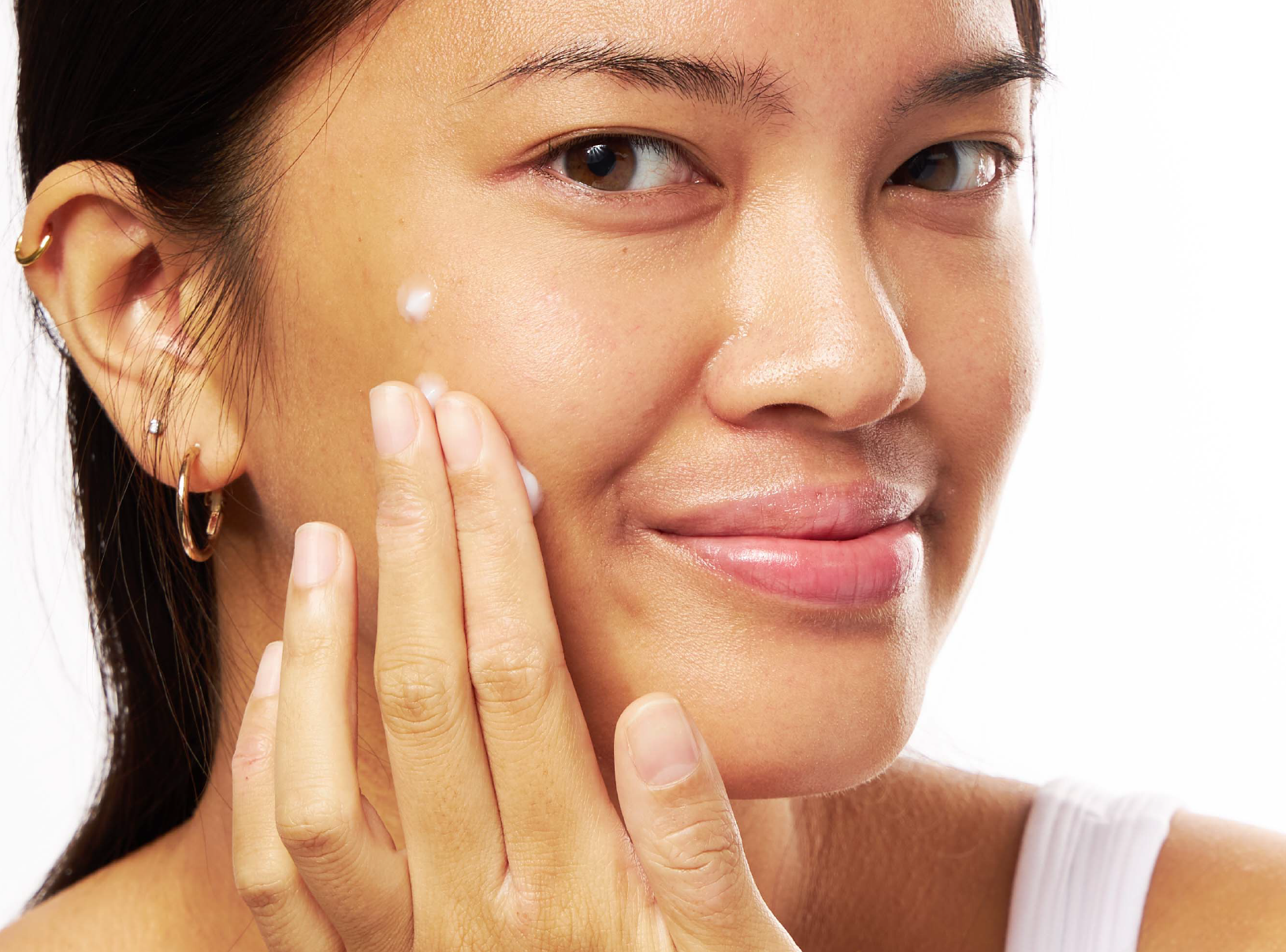Education
Acne vs. pimples: is there a difference?


SHARE
Education
Acne vs. pimples: is there a difference?
Medically reviewed by Kristin Hall, FNP
Written by Apostrophe Team
Last updated 4/1/2024
Acne, pimples, blackheads, zits — forget labeling it correctly, you see a bump on your face, the only thing you’re concerned about is getting rid of it — and fast!
From around the age of 13 when puberty hits in boys and girls — faces, backs, shoulders, and chests experience outbreaks that can be brought on by these skin conditions. The collective power of these skin concerns has granted the acne-fighting industry, multiple billions of dollars in earnings for their treatment.
But does it matter that these skin conditions are named interchangeably? Could our indifference in properly labeling these skin diseases, affect treatment and their outcomes? We’ll be taking on acne versus pimples, and examining common skin conditions to make comparisons. Lastly, we’ll examine appropriate treatments to help manage acne.
Acne vs. Pimples
If you’re one to use “acne” and “pimples” interchangeably, you’re probably wondering: “What is the difference between pimples and acne?” Well, to begin with, pimples are a type of acne.
Acne or acne vulgaris is a skin condition that manifests when hair follicles underneath the skin become clogged. It usually occurs when oil and dead skin cells plug up the pores. The type of acne you have is dependent on what clogs your pores. Acne can be inflammatory or non-inflammatory which brings us to — pimples.
Pimples are a type of non-inflammatory acne, they are a milder form of acne. There are different types of pimples which include blackheads, white heads, papules, and pustules. Nodules and cysts are more serious forms of acne.
As mentioned, we’ll be checking out the differences between these skin conditions, but before we do — an easy breakdown of the differences between acne and pimples comes down to acne being the major skin condition that occurs when the pores are clogged. Pimples are a mild sub-division of said acne, with nodules and cysts making up the severe forms of acne.
Now, let's break them down.
Whiteheads Vs Pimples
As we’ve mentioned, pimples are a type of non-inflammatory acne.
To explain in detail how acne is formed, here’s an easy-to-understand explanation summarised by the National Institutes of Health.
Acne begins in the skin’s oil glands where sebum is produced. From the oil glands, oil travels up a follicle, which usually contains a single strand of hair. The oil then travels up the follicle canal to empty out of an opening on the skin's surface. This opening is known as a pore.
However, the oils, hair, and cells that line the very narrow hair follicle can cause a plug, blocking up the pore. When this happens, oil is prevented from reaching the skin surface.
And if that isn’t bad enough, the oil and bacteria present in the skin mix, growing in the already plugged follicle. When your body moves to protect against the bacteria, the area typically becomes inflamed, causing skin lesions.
If the plugged follicle stays beneath the skin surface, you get a whitehead. But, if that same plugged follicle reaches the skin surface and opens up, it will be exposed to air, causing its color to change. This forms what is known as a blackhead. A blackhead is yet another type of pimple.
These blackheads and whiteheads are what is known as “comedones.” They are classified as mild acne.
Papules vs. Pustules
Papules occur when the excess oil, dead skin cells, and bacteria that cause acne, push deeply enough to become inflammatory. Papules are small, red bumps which can be found on the face.
Pustules are pretty much like papules, but filled instead with yellow, liquid pus. They usually contain a yellow or white colored center. These types of pimples are considered moderate acne.
Nodules vs. Cysts
These lesions refer to very irritated skin pores. Nodules and cysts are blocked pores that go very deeply into the skin. Nodules are often reddish and painful, and are typically hard. Cysts are softer and usually filled with pus. In comparing cystic acne versus pimples, cysts are considered severe acne, likewise nodules. They commonly lead to scarring.
Treatment of Acne
Treating acne is dependent on a number of factors. According to the American Academy of Dermatologists, it could be conditional on the type of acne in question, where the acne appears on the skin, what treatments have been tried, when the breakouts started, age and whether or not the acne left any scarring or dark spots.
In treating the specific types of acne, your healthcare provider or certified dermatology practitioner should consider the following:
White heads and blackheads: The first options for treating mild acne usually require topical treatments like retinoids alone, or retinoids and benzoyl peroxide. Treatment may also require a combination of topical treatments with a recommended antibiotic. Topical retinoids are recommended because they are comedolytic (i.e., they prevent the formation of comedones which form when oil, dead skin cells and hair are trapped in the pore). They are also useful for treating mild acne when it appears, added to their anti-inflammatory properties. A commonly recommended retinoid for over-the-counter treatment is adapalene. Benzoyl peroxide is a useful therapy in treating acne. This is owed to its ability to significantly reduce Propionibacterium acnes (the bacteria that lives in the skin and aids in the formation of acne), also known as P. acnes (now called C. acnes). It is also able to reduce noninflammatory acne lesions like whiteheads and blackheads. Yet another option is antibiotics. Antibiotics are useful for killing off excess skin bacteria and reducing redness and inflammation. There is, however, a tendency for our bodies to build a resistance to antibiotics after prolonged use, so it’s best to use them for the shortest time possible. Popular antibiotics for acne include doxycycline and erythromycin. Alternately, combining benzoyl peroxide with topical antibiotics is recommended to help prevent developing antibiotic resistance.
Papules and Pustules: Identical methods may be used in treating pustules and papules. But perhaps the first point to note when treating both skin conditions is to avoid popping them, as this can worsen the breakout, prolong the healing period, heighten the risk of possible scarring and, perhaps worst of all, even help the breakout spread. Washing your face with products that contain benzoyl peroxide or salicylic acid, which may help to ease inflammation and unclog pores, is also very useful in helping to treat papules and pustules.
Nodules and cysts: Nodules and cysts are severe incidences of acne, and often require the help of either a knowledgeable healthcare professional or a certified dermatology practitioner. To treat this acne, they may administer a corticosteroid injection. Corticosteroids help to suppress the inflammatory genes that can lead to severe acne. These injections typically flatten most acne nodules and cysts within 48 hours to 72 hours.
The Bottom Line on Acne vs. Pimples
So what have we learned?
Acne is a skin condition manifested in pimples. These pimples include what we know as blackheads, whiteheads, pustules, and papules — conditions that make up mild to moderate acne.
Acne may also be severe, which is where painful cysts and nodules come up.
Without a doubt, nobody has ever gone on record as saying they love acne. Luckily, there are plenty of effective treatment options out there.
These treatments, however, are usually dependent on the type of skin condition you may be dealing with. Broadly, they include topical retinoids, benzoyl peroxide, salicylic acid, and, in severe cases, corticosteroid injections.
Luckily, finding the right treatment option for you should generally begin with a conversation with a healthcare provider or a certified dermatology practitioner. They’ll be able to help guide you in the right direction.
Like what you just read? Sign up for our email list to get the scoop on skincare science delivered straight to your inbox.

Education
What is milia?
What is milia? Today, we’re jumping into one type of bump that you may have heard about most commonly in infants — milia.
Read More
Education
Best moisturizer for acne-prone skin
If you have combination acne-prone skin, figuring out which moisturizer is best for your skin might be tough. In this guide, we break down the best moisturizer for combination, acne-prone skin.
Read More
Education
How to build a face care routine
As you get into skincare, it might seem overwhelming, especially trying to figure out the order you're supposed to apply products in. Below, we detail how to build a face care routine for your skin!
Read More
